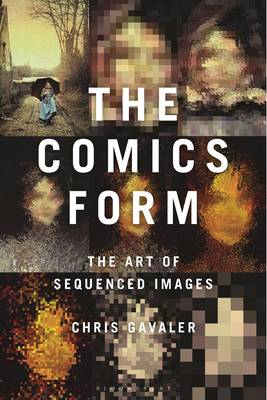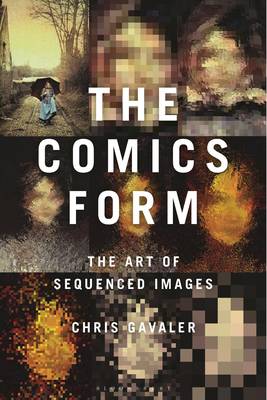
- Afhalen na 1 uur in een winkel met voorraad
- Gratis thuislevering in België vanaf € 30
- Ruim aanbod met 7 miljoen producten
- Afhalen na 1 uur in een winkel met voorraad
- Gratis thuislevering in België vanaf € 30
- Ruim aanbod met 7 miljoen producten
Zoeken
€ 67,95
+ 135 punten
Uitvoering
Omschrijving
Answering foundational questions like "what is a comic" and "how do comics work" in original and imaginative ways, this book adapts established, formalist approaches to explaining the experience of reading comics. Taking stock of a multitude of case studies and examples, The Comics Formdemonstrates that any object can be read as a comic so long as it displays a set of relevant formal features. Drawing from the worlds of art criticism and literary studies to put forward innovative new ways of thinking and talking about comics, this book challenges certain terminology and such theorizing terms as 'narrate' which have historically been employed somewhat loosely.
In unpacking the way in which sequenced images work, The Comics Form introduces tools of analysis such as discourse and diegesis; details further qualities of visual representation such as resemblance, custom norms, style, simplification, exaggeration, style modes, transparency and specification, perspective and framing, focalization and ocularization; and applies formal art analysis to comics images. This book also examines the conclusions readers draw from the way certain images are presented and what they trigger, and offers clear definitions of the roles and features of text-narrators, image-narrators, and image-text narrators in both non-linguistic images and word-images.
In unpacking the way in which sequenced images work, The Comics Form introduces tools of analysis such as discourse and diegesis; details further qualities of visual representation such as resemblance, custom norms, style, simplification, exaggeration, style modes, transparency and specification, perspective and framing, focalization and ocularization; and applies formal art analysis to comics images. This book also examines the conclusions readers draw from the way certain images are presented and what they trigger, and offers clear definitions of the roles and features of text-narrators, image-narrators, and image-text narrators in both non-linguistic images and word-images.
Specificaties
Betrokkenen
- Auteur(s):
- Uitgeverij:
Inhoud
- Aantal bladzijden:
- 248
- Taal:
- Engels
Eigenschappen
- Productcode (EAN):
- 9781350245952
- Verschijningsdatum:
- 25/01/2024
- Uitvoering:
- Paperback
- Formaat:
- Trade paperback (VS)
- Afmetingen:
- 156 mm x 234 mm
- Gewicht:
- 344 g

Alleen bij Standaard Boekhandel
+ 135 punten op je klantenkaart van Standaard Boekhandel
Beoordelingen
We publiceren alleen reviews die voldoen aan de voorwaarden voor reviews. Bekijk onze voorwaarden voor reviews.








